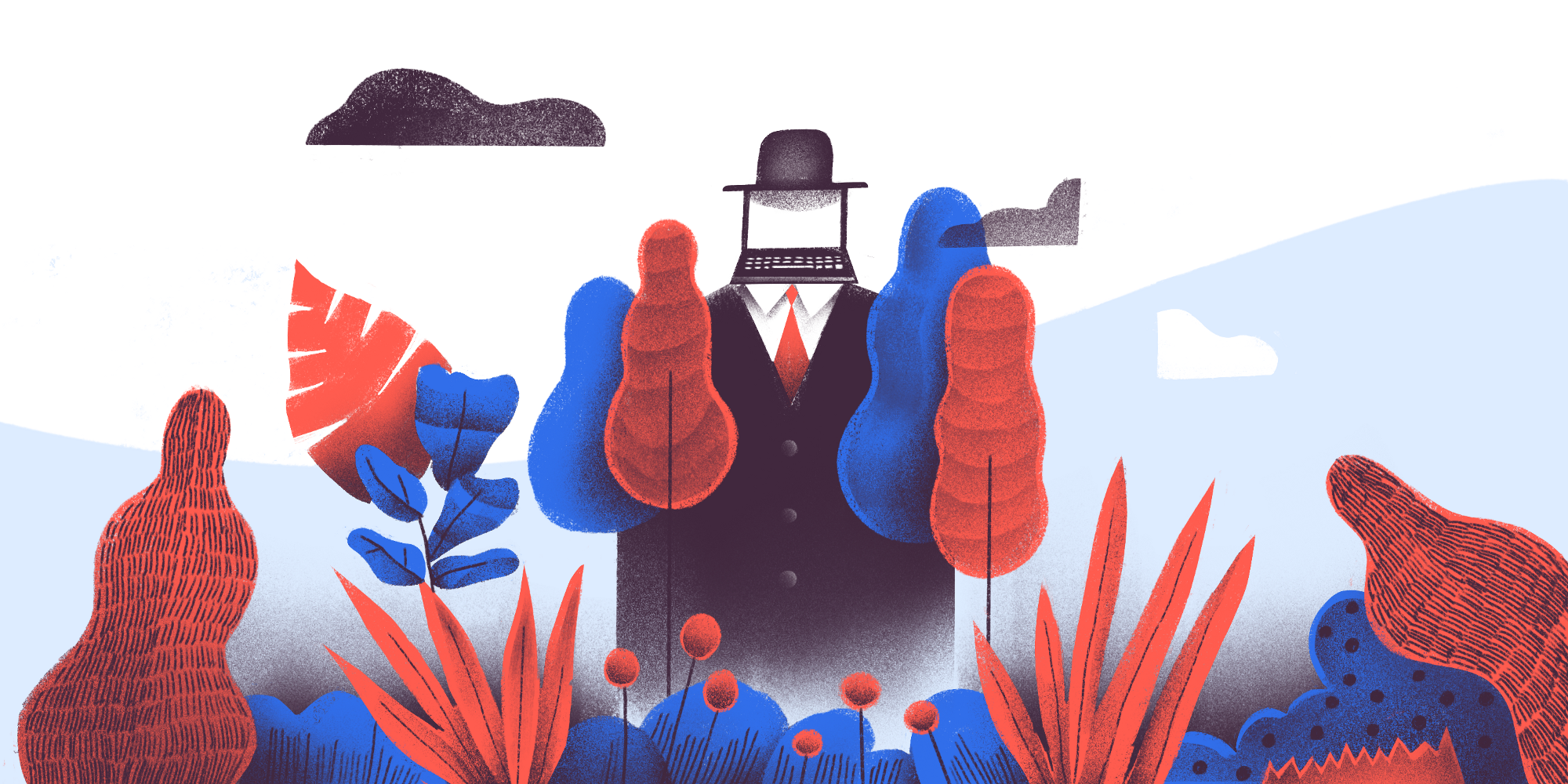Students have long tried — usually with little success — to convince their teachers to hold class outside on a nice day.
This past summer, outdoor apparel company L.L. Bean and co-working company Industrious sought to encourage bosses to do the same thing by opening temporary co-working spaces in New York City, Philadelphia, Boston, and Madison, Wisconsin. The spaces were equipped with outlets, WiFi, open air meeting rooms, individual desk space, and even chairs with bike pedals.
“Research shows that spending time outside makes us more productive, more creative, and happier,” L.L. Bean said on their website. “We’re starting a movement,” the company said, to encourage people to take “a small piece of your workday outside.”
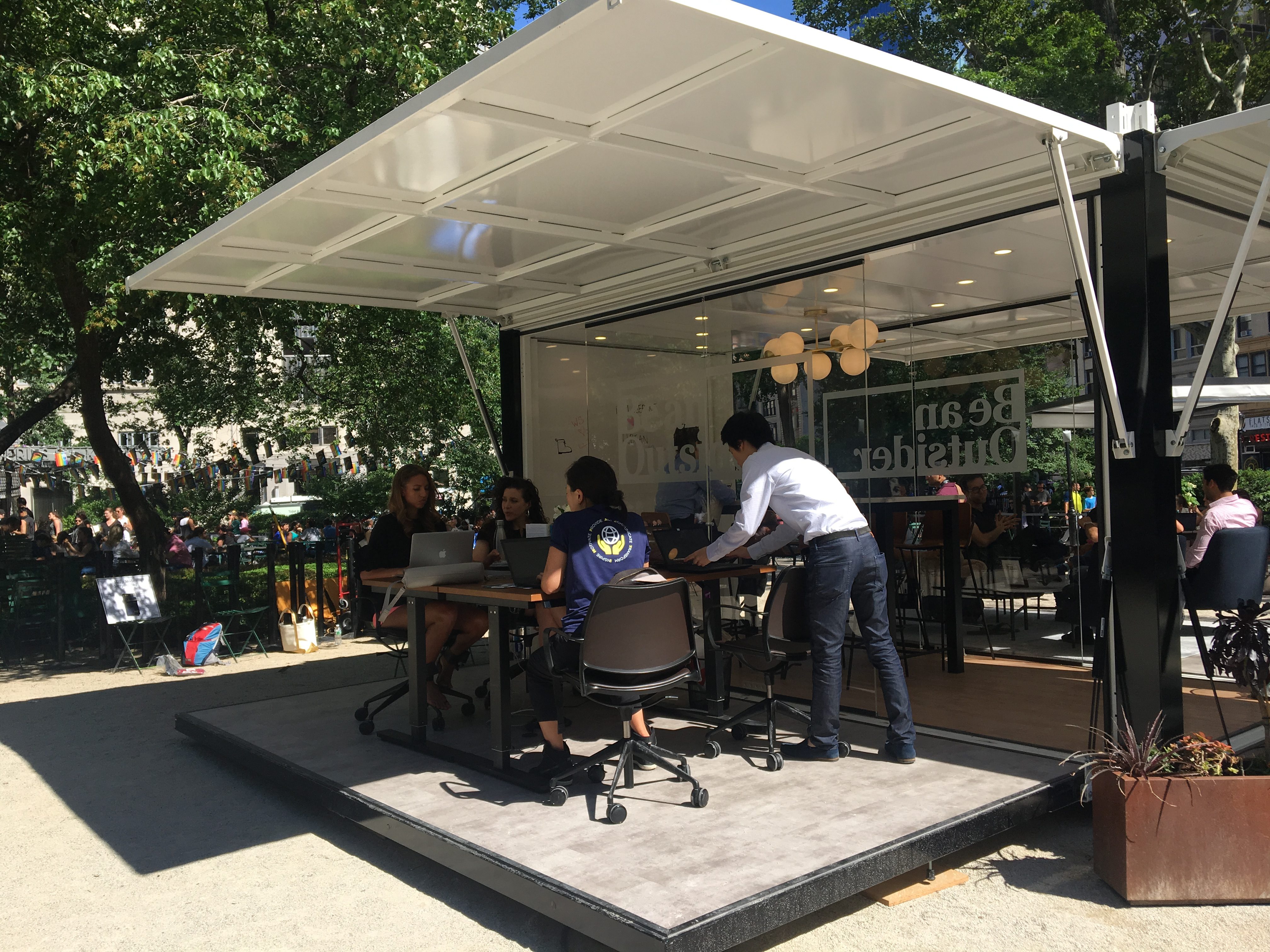
When I visited their space in New York’s Madison Square Park in late June, nearby office workers had descended with their laptops, filling up the meeting pods and solo spaces that L.L. Bean and Industrious were renting in hour-long time slots for free.
Research shows that spending time outside makes us more productive, more creative, and happier.
Although not widely practiced, the idea of working outdoors or among natural elements is emerging among workplace designers and a number of companies. At the same time, a growing body of research is showing what many of us intuitively know: being in the outdoors does wonders for our mind and bodies.
It comes in an era when Americans are perhaps more divorced from nature than ever. We spend only around 7 percent of our time outside, according to a study by the U.S. Environmental Protection Agency, and a fraction of that time in nature. Children spend less time outdoors on average than prison inmates, according to an arresting video campaign from 2016 called Free the Kids by Persil laundry detergent. Many experts fear this is giving us “nature deficit disorder,” a term coined by writer Richard Luov to describe the negative effects of being divorced from the outdoors.
But why take your office work outside? L.L. Bean says it has chosen to focus on the workplace — rather than say, encouraging people to hike or camp — because work is where we spend so much of our time — from around one-half to one-third of our waking hours.
“We’re not viewing this as an escape; the framework is productive time in the outdoors,” said Kathryn Pratt, director of brand engagement at L.L. Bean.
They and others say working outside could help reduce some of the common problems people have at the office — such as lack of focus and engagement — and help improve workers’ performance, creativity, and general well-being. But although being outside — particularly in nature and away from an urban environment — confers an overwhelming amount of benefits, there is less scientific research about whether taking office work outside has the same effect.
We’re not viewing this as an escape; the framework is productive time in the outdoors.
Could working outside be a way to address some of the challenges of the modern workplace, or will it be used by organizations as another perfunctory and tone-deaf wellness program — like the stress reduction workshops no one attends because they’re too busy with work? I spoke with scientists and workplaces that are offering the option to find out more.
From spherical glass conservatories to co-working campsites

Earlier this year, Amazon opened The Spheres in Seattle, three domes made of glass that are home to more than 40,000 plants from 30 countries, intended as a space where employees can work or take breaks. The company says it is using “biophilic design” principles to better connect employees with elements of the outdoors.
“The Spheres are a result of innovative thinking about the character of the workplace and an extended conversation about what is typically missing from urban offices — a direct link to nature,” says John Sa, a spokesman for Amazon. The building has inspired more greenery throughout the company, including a “Plant Camp” where employees and community members learn how to make plant arts and crafts.
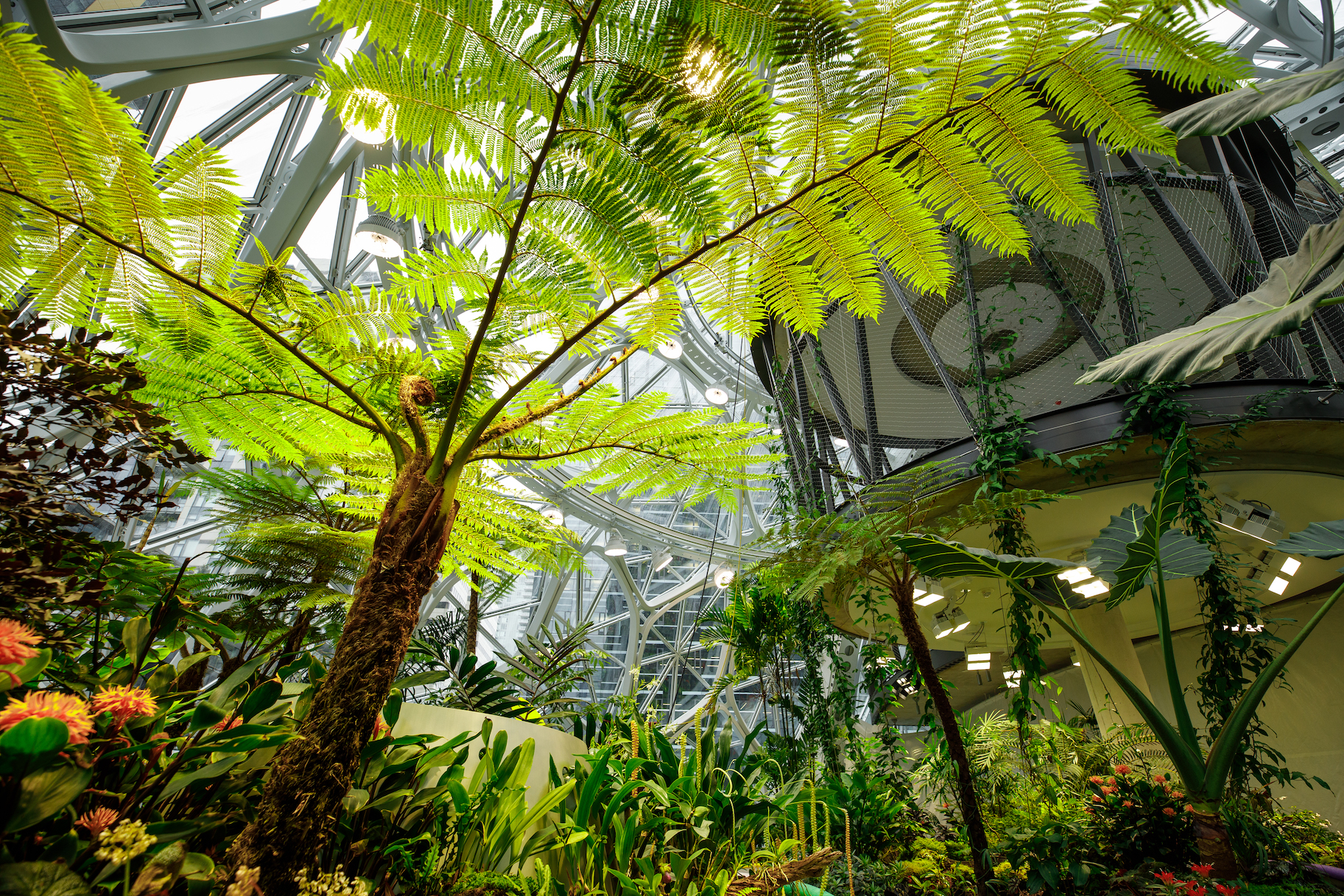
Other tech giants, like Apple, Google, Facebook, and Microsoft similarly offer biophilic spaces at work, such as roof decks that look out into greenery and treehouse meeting spaces.
In San Francisco, the company Campsyte runs an outdoor co-working space that offers individual and corporate memberships. Set up to look like a campground, the space includes real vegetation such as Japanese birch trees, murals of forest scenes, a fire pit, picnic tables, and trailers for when people want to take a break indoors or shelter during windy weather.
Campsyte CEO Niki Choo, who was a raft and ski instructor growing up in Ottawa and Vancouver, Canada, was inspired to open the space after working as a residential developer and investment banker and feeling nature was missing from office life. “I very much know the burden of working inside for long hours at a time,” she says. Being outdoors is “great for your brain, it’s great for your well-being, and that’s why the companies that use us really love us in SF.” Many of the employees of local businesses who have memberships stop by at least once a week, says Choo.
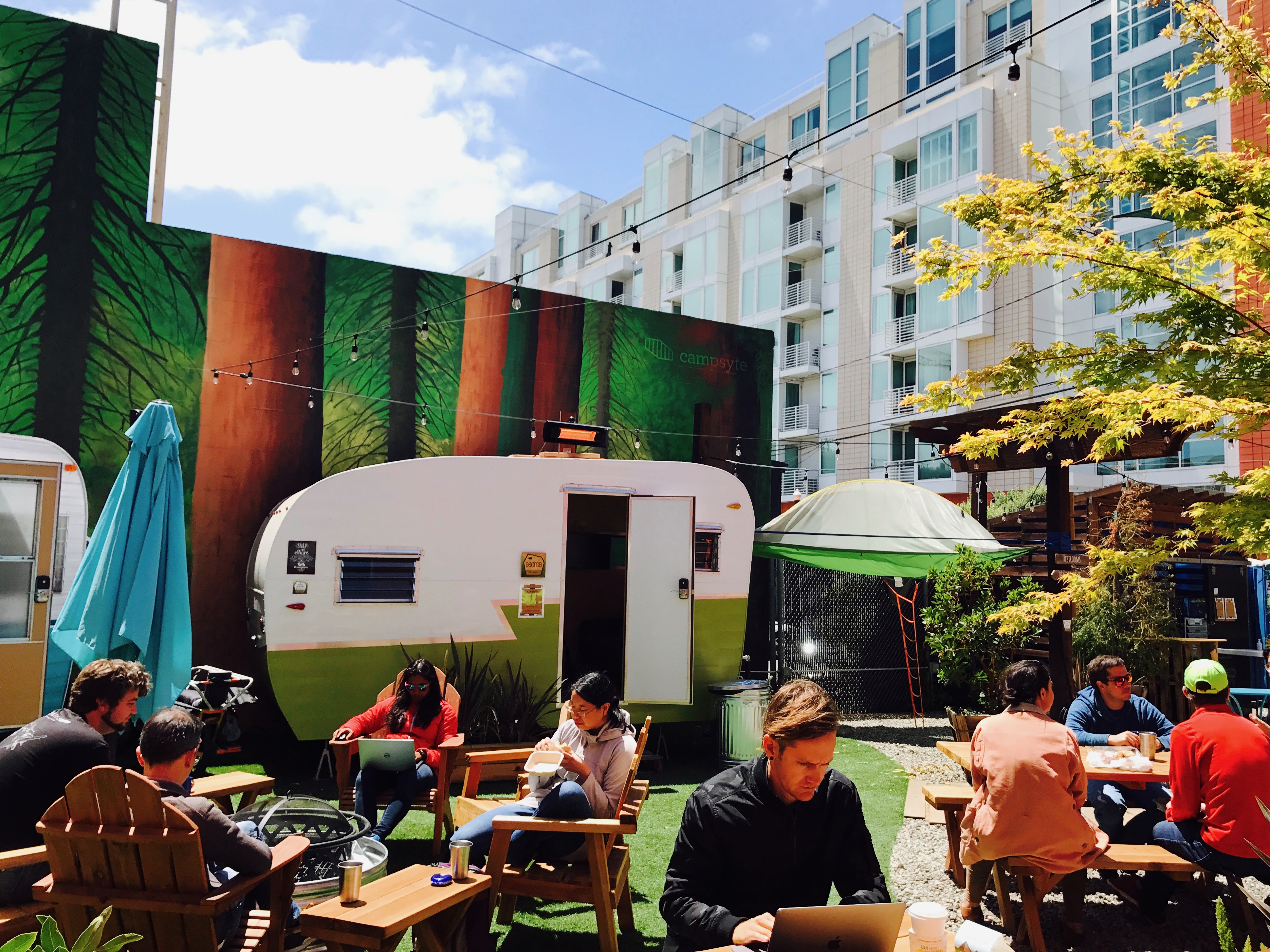
Yet, for most workplaces, spending time in the outdoors would be a huge shift. Currently, 75 percent of indoor workers rarely or never take time to work outside, according to L.L. Bean’s own survey. People avoid going outdoors during work less because of concerns about weather or technical limitations than owing to workplace culture, the survey finds. Fifty-six percent of respondents felt that their colleagues and managers would perceive them negatively for taking some time to work outside.
Fifty-six percent of respondents felt that their colleagues and managers would perceive them negatively for taking some time to work outside.
“You need to change the culture first,” Leigh Stringer, a workplace design specialist who advised L.L. Bean told me, “and that starts with senior leaders participating and showing their support.”
For companies that are new to the idea of outdoor working, L.L. Bean published a handbook with suggestions that are a bit more modest than building treehouses or gigantic glass domes. They include holding meetings outside; creating a dedicated workspace with WiFi, anti-glare screens, and shade; and encouraging five to 15-minute breaks over lunch.
Our brains on nature
In his admired 1984 book Biophilia, Harvard biologist Edmund O. Wilson wrote about the innate connection humans feel to other living things and the benefits of being outdoors. “Nature holds the key to our aesthetic, intellectual, cognitive, and even spiritual satisfaction,” he said. Much scientific research has borne this out since. Studies have found being in nature, being exposed to natural elements, or, in some cases, simply having a view of nature from a window, leads to improved blood pressure and immune system functioning; better sleep; reduced stress, depression, and rumination; better focus; increased meditation and creativity; and “significant” improvements in our overall happiness.
It’s not a stretch to understand how spending some time outside could help at work, especially if work is near a park or natural space. As Florence Williams, author of the book the Nature Fix: Why Nature Makes Us Happier, Healthier, and More Creative, says nature takes us away from our inner obsessions and gives us “a sense of something larger than ourselves and our problems.” “If we’re kind of stuck on something psychologically that happened or emotionally — if we got into a tense conversation with a co-worker — it’s good to get a shift in perspective, get out of that cycle of rumination which is maybe not serving us,” she adds.
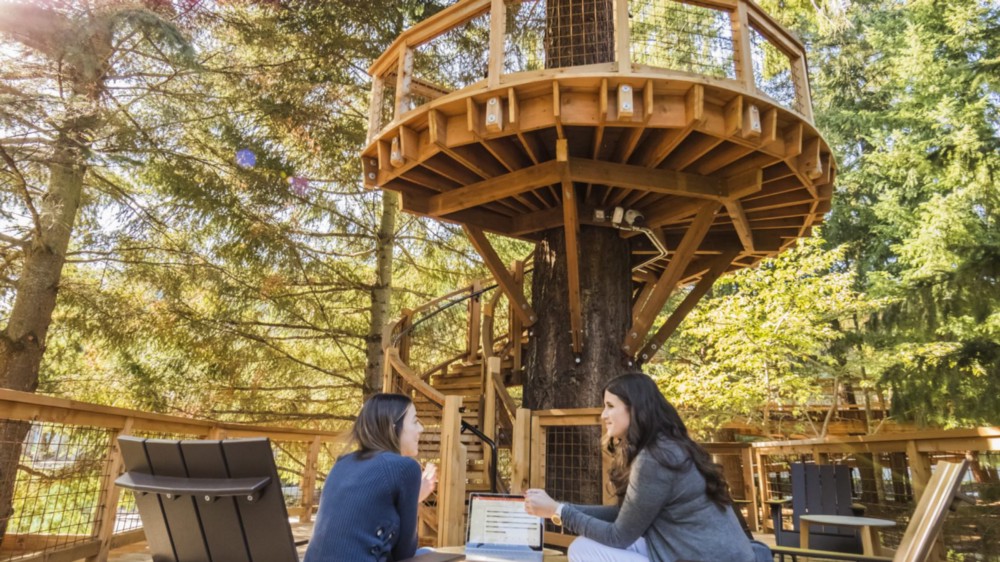
That recalibrated mindset is better for our coworkers and general office dynamics as well, she adds: “When we go back to work, we tend to feel more community-minded and more civil with each other, because our own ego shrinks in the context of being in the natural world.”
Linda Powers Tomasso, a PhD student in the Harvard Chan School of Public Health’s Department of Environmental Health, says that outdoor meetings help reduce the inherent stress that comes with an often dreaded part of the workday. “The imbalance in the hierarchy is removed by being outside,” because an employee is not having to go to a superior’s office, she points out.
Just an hour spent walking in nature improved participants’ attention spans and memory by 20 percent.
Maybe most interesting given the problem so many workers have with distraction are the benefits being in nature has for our attention, which, as William Sullivan, professor and head of the Department of Landscape Architecture at the University of Illinois, writes “is necessary for almost everything we care about doing.” According to one study, just an hour spent walking in nature improved participants’ attention spans and memory by 20 percent.
Experts say this is because when we go into the outdoors, we give a crucial rest to our “top down” attention span — the mental resources we use to pay attention to work tasks like writing an email or reading a report. “That mechanism is incredibly effective but it fatigues,” says Sullivan. “When it rests, it gets restored. When it restores, you’re able to get back to work at a higher level then when you took a break.” Environmental psychologists Rachel and Stephen Kaplan have called this idea “attention restoration theory.”
In nature, our minds also enter what environmental psychologists call “soft fascination,” when we are surrounded by elements that inherently fascinate us — birds, plants, a river — but do not demand our full attention. Soft fascination is great for creativity, according to experts. “It leaves room in the head for you to think about other things, for your mind to wander,” helping us think in ways that are more unpredictable than usual says Jason Duvall, a lecturer and postdoctoral researcher for the Program in the Environment at University of Michigan.
“All day long we are task-switching, multitasking. In nature we can just kind of space out a little and let our sensory brains take over.”
In contrast, the typical workday leaves our minds drained and weary by the time we leave the office, if not well before. “All day long we are task-switching, multitasking. [In nature] we can just kind of space out a little bit and let our sensory brains take over,” says Williams.
Is it nature or being away from technology that restores our attention?
Despite the evidence for being outdoors, it’s not clear that taking your laptop outside is as refreshing and rejuvenating as going on a hike or bike ride. In fact, some scientists have found that being in nature is so restorative in part because we are disengaged from “attention demanding” technology.

A recent study by Sullivan and colleagues Bin Jiang, a landscape architecture professor at the University of Hong Kong; and Rose Schmillen, a former University of Illinois graduate student compared undergraduates who were with and without a laptop in green or barren spaces around the University of Illinois campus. They asked these groups of students to do exercises that got them mentally fatigued, then gave them a break, allowing the students with the laptops to use them for leisure activities like looking at social media and YouTube. Only the students who were in a green space and not using a laptop had a significant increase in their “attentional functioning,” the study found.
“What this research suggests to us is that in order to reap the benefits of being in a green space, you have to disengage from work and actually be in the space,” says Sullivan.
Duvall agrees:
“It’s not as if working with your computer in nature is as restorative as if you went into nature without your computer. You’re still pulled into your other environments where you have to do a lot of processing.”
He suggests workplaces explore other ways to incorporate nature and manage our “attentional resources” that don’t involve our computers.
Why not just let people leave work earlier?
The idea of working outdoors follows other workplace wellness efforts like mindfulness meditation — trends that seem to have sprung up out of fear that the way we work is deeply removed from the way humans are meant to naturally live. It says something about the primacy of work in modern life that we look to companies and the workplace to address some of our biggest social and cultural challenges. And it begs the question of whether our priority should be in trying to change the fundamental aspects of modern work life that leave us so in need of a long walk in the park.
It says something about the primacy of work in modern life that we look to companies and the workplace to address some of our biggest social and cultural challenges.
What if, rather than sending employees out for an adult recess, companies tried to cut back on the aspects of work that cause so much stress and burnout? A small number of companies have done this already, putting boundaries around hours, preventing employees from receiving email while on vacation, and reducing the number of work meetings. REI even closes its stores on Black Friday, the busy sales day after Thanksgiving, which it has renamed #OptOutsideDay, to encourage employees to take their time off outdoors.
So is focusing on working outside missing the forest for the trees (pun very much intended)?
“While I agree with you that it would be nice if we didn’t work so many long hours, we have data that would tell you that even if that person went home early, they’re not going outside,” said Ruth Ann Atchley, an environmental psychologist and Associate Vice President Community Engagement at University of South Florida, when I asked her this question. “If they got off at 4 and not 6, are they more likely to spend that two-hour period of time out of doors? Odds are, no. Where are they going to go? They’re going to go home and get on their devices.”
Atchley thinks Americans would want to spend more time outdoors if they were pushed to do so. Indeed, over three-quarters of Americans rate contact with nature as very or extremely important for their physical health and emotional outlook. And visits to national parks, on the decline for many years, are now reaching record numbers.
“One of the things that will get people to start logging off and going outside is if they personally experience the benefit of it,” Atchley says. “If their work is saying you have to go do this thing and then they find, I’m less stressed out, I’m hearing this person better, I found myself coming up with cooler ideas, they’ll start utilizing it as a technique in their own personal lives.”
Taking your work outside might not be the answer to the modern workplace and its discontents, but it could be an answer.
